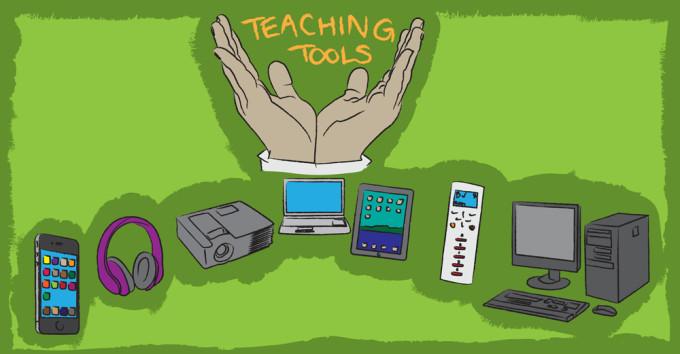By Arti Panday
From copying notes from an overhead projector to tweeting a professor for participation marks, technology is changing the standards by which students are expected to perform – and learn – in the classroom.
In the advent of social networking sites, schools have frowned upon the use of technological platforms that serve only as distractions. But professors are now encouraging their students to take advantage of these resources as tools for learning and enhancing interaction. Cross-platform teaching styles not only test professors; they challenge students’ minds as well.
Lisa Taylor, a journalism professor at Ryerson University, turns to Twitter, PowerPoint presentations, videos, and iClickers to keep students actively engaging and absorbing material in different ways in her lectures.
“When I started teaching here at Ryerson I thought, ‘I’m not going to be stuck in my age and believe that students can’t do both [learn and use technology]’ because clearly there’s all sorts of studies that say that your brain is a better multitasking brain than mine was when I was in university,” Taylor said. “I think technology makes especially dense material more engaging.”
Taylor is one of the many professors who seeks assistance from Digital Media Projects (DMP), a group of staff at Ryerson that facilitates the use of technology in the classroom in various programs. The goal is to make it easy for professors to experiment with delivering content.
Like Taylor, Ron Babin, an information and technology management professor at the Ted Rogers School of Management, believes technology is a benefit to lectures. Babin prefers using features like Blackboard, which he considers more valuable as a technological forum than alternatives such as YouTube or Twitter, because they are also able to engage students outside of the classroom.
“Ryerson is probably one of the leaders in the use of technology in classrooms,” Babin said. “Where it gets interesting is where we use Blackboard to encourage debates with our students in the class.”
But measuring the effectiveness of this ample pool of resources depends on the nature of the course material, and it varies from course to course, according to Resitani Andriati, manager of DMP.
“It’s pretty interesting because it’s more on the professor rather than the faculty,” said Andriati. “You can find a course with a clicker, it also has video tutorial and it also has online assignments. It depends on the professor and how they would like to run their course.”
While Babin agrees that the use of technology is growing among post-secondary courses, he acknowledges that teachers cannot rely solely on tech to help students understand their material.
Justin Ali, a third-year mechanical engineering student agrees on the importance of teacher engagement and, for the purpose of his specific program, finds that his professors choose to incorporate less technology than others.
“I don’t find it very effective when the profs just use slides [on PowerPoint,] it’s more effective for our purpose, in engineering, if they just write on the board,” he said. “Most people don’t really use a lot of technology in class because there’s nothing that we learn in class that you can actually type.”
Rania El Morsy, a fourth-year psychology student, said that although technology can enhance students’ ability to keep up with and contextualize lecture material, students have to be responsible for keeping themselves on track and monitoring how they learn best.
“It’s effective in the sense that you can type faster than you can write so you can keep up with the professor but if you’re using it in the wrong way – going on websites and You Tube – then you can be distracting other people,” El Morsy said. “If it’s used responsibly it can be a good addition to our education.”
Though Ryerson provides all instructors with access to basic technology, such as slide projectors and computers, Ryerson continues to change its relationship with tehnology.
The school’s move towards Gmail and Google Apps this fall.
The recent switch to Google has received an overwhelming positive response, according to Jim Buchanan, the assistant director of client services at computing and communications services (CCS).
“There have been some people who [are] uncomfortable with Google but for the most part there’s been an overwhelming amount of people who’ve been happy with it and finding all kinds of ways to use Google Docs to share documents and collaborate on things,” Buchanan said.
But the pressures of taking advantage of new technologies in postsecondary education make it easier for both the student and the professor to lose track of the most fundamental part of learning – student engagement, Babin said.
“The most important thing in education is engaging the students, the audience,” he said. “We run the risk of using technology to mask or be a substitute to student engagement. If we were to rely on technology completely and solely – we really wouldn’t need a professor.”










Leave a Reply